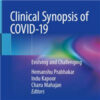True ARDS might be defined as a histological diagnosis involving diffuse alveolar damage throughout the lungs (characterized by hyaline membrane formation and thickening of the alveolar walls).
PseudoARDS refers to patients who mimic ARDS, but don’t truly have severe lung damage. These patients may technically meet the definition of ARDS. Their outcome is usually surprisingly good, compared to true ARDS patients.
#1: PseudoARDS-Volume pattern
This pattern was initially recognized several years ago (Schrier 1995). The combination of the obesity epidemic and the SEP-1 sepsis core measures in the United States have made this increasingly common recently.
#2: PseudoARDS-Effusion pattern
PseudoARDS-effusion refers to a patient with bilateral infiltrates who seems to have ARDS, but whose respiratory failure is actually due largely to effusions and adjacent atelectasis.
#3: PseudoARDS-Collapse pattern
PseudoARDS-collapse is respiratory failure which is largely due to atelectasis. The most common form of this is collapse of the lower lobe(s) or dependent lung tissue, which is a common problem among morbidly obese patients or intubated patients.

















